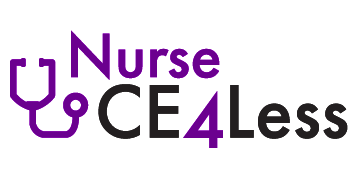Course Summary
The use of biological and chemical weapons for warfare dates back many centuries. More modern incidents of terrorism using biological, chemical, or radiological weapons have occurred during and after the 20th Century. Given the potential for a terrorist attack using these types of agents, it is important for healthcare teams to have a working knowledge of the agents and weapons of war. There is a potential for serious harm to the public and healthcare personnel without proper awareness and preparation to enable healthcare teams and the public to know how to detect, respond, and manage a potential terrorist event competently. Biological weapons include infectious agents and toxins caused by living organisms. The Centers for Disease Control and Prevention lists three categories of bioterrorism agents of A, B, and C, which are based on risk to public health and safety. Bioterrorism agents, chemical weapons, and the use of radiation for terrorist acts are discussed. Additionally, responses to acts of bioterrorism and the need for preparedness are addressed from a local and national standpoint, including the role of healthcare personnel in assisting the public to avoid the danger and suffering of a terrorist attack.
Course Format
Homestudy
Course Syllabus
- Introduction
- History of Bioterrorism
- Worldwide Bioterrorism
- Biological, Chemical, and Radiological Weapons
- Biological Warfare and Weapons
- Classification of Biological Weapons: A, B, C
- Category A Bioterrorism Agents
- Anthrax (Inhalational Anthrax)
- Signs and Symptoms
- Plague (Yersinia pestis)
- Botulism
- Smallpox
- Tularemia
- Viral Hemorrhagic Fevers
- Category B Bioterrorism Agents
- Brucellosis
- Clostridium Perfringens Epsilon Toxin
- Glanders
- Melioidosis
- Psittacosis
- Q Fever
- Ricin
- Typhus Fever
- Staphylococcus Aureus
- Vibrio Cholerae
- Viral Encephalitis
- Category C Bioterrorism Agents
- Hantavirus
- Nipah Virus
- Chemical Agents for Terrorism
- Radiological Terrorism
- Weaponizing Radiation
- Acute Radiation Syndrome (ARS)
- Surveillance: Biological, Chemical, or Radiological Terrorism
- Preparation, Recognition, and Response
- Biological Weapons Attack Preparation
- Case Studies: Anthrax
- Case Study 1
- Case Study 2
- Case Study 3
- Case Study 4
- Summary
Author
Dana Bartlett, RN, BSN, MSN, MA, CSPI
Dana Bartlett is a professional nurse and author. His clinical experience includes 16 years of ICU and ER experience and over 27 years as a poison control center information specialist. Dana has published numerous CE and journal articles, written NCLEX material, textbook chapters, and more than 100 online CE articles, and done editing and reviewing for publishers such as Elsevier, Lippincott, and Thieme. He has written widely on the subject of toxicology and was a contributing editor, toxicology section, for Critical Care Nurse journal. He is currently employed at the Connecticut Poison Control Center. He lives in Wappingers Falls, NY.


